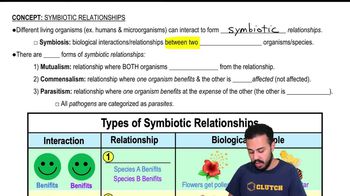It is possible to purchase the following microorganisms in a retail store. Provide a reason for buying each.
a. Bacillus thuringiensis
b. Saccharomyces
 Verified step by step guidance
Verified step by step guidance


It is possible to purchase the following microorganisms in a retail store. Provide a reason for buying each.
a. Bacillus thuringiensis
b. Saccharomyces
Which of the following is a beneficial activity of microorganisms?
a. Some microorganisms are used as food for humans.
b. Some microorganisms use carbon dioxide.
c. Some microorganisms provide nitrogen for plant growth.
d. Some microorganisms are used in sewage treatment processes.
e. all of the above
NAME IT What type of microorganism has a peptidoglycan cell wall, has DNA that is not contained in a nucleus, and has flagella?
DRAW IT Show where airborne microbes ended up in Pasteur’s experiment. <IMAGE>
Which of the following is an example of bioremediation?
a. application of oil-degrading bacteria to an oil spill
b. application of bacteria to a crop to prevent frost damage
c. fixation of gaseous nitrogen into usable nitrogen
d. production by bacteria of a human protein such as interferon
e. all of the above
Spallanzani’s conclusion about spontaneous generation was challenged because Antoine Lavoisier had just shown that oxygen was the vital component of air. Which of the following statements is true?
a. All life requires air.
b. Only disease-causing organisms require air.
c. Some microbes do not require air.
d. Pasteur kept air out of his biogenesis experiments.
e. Lavoisier was mistaken.